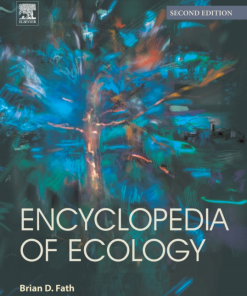Predator Ecology: Evolutionary Ecology of the Functional Response 1st Edition
$50.00 Original price was: $50.00.$25.00Current price is: $25.00.
Predator Ecology: Evolutionary Ecology of the Functional Response 1st Edition – Ebook Instant Download/Delivery ISBN(s): 9780192895516,9780192895509,9780192648082,0192895516,0192895508,019264808X

Product details:
- ISBN-10: 019264808X
- ISBN-13: 9780192648082
- Author: John P. DeLong
Predator-prey interactions are ubiquitous, govern the flow of energy up trophic levels, and strongly influence the structure of ecological systems. They are typically quantified using the functional response – the relationship between a predator’s foraging rate and the availability of food. As such, the functional response is central to how all ecological communities function – since all communities contain foragers – and a principal driver of the abundance, diversity, and dynamics of ecological communities. The functional response also reflects all the behaviors, traits, and strategies that predators use to hunt prey and that prey use to evade predation. It is thus both a clear reflection of past evolution, including predator-prey arms races, and a major force driving the future evolution of both predator and prey. Despite their importance, there have been remarkably few attempts to synthesize or even briefly review functional responses. This novel and accessible book fills this gap, clearly demonstrating their crucial role as the link between individuals, evolution, and community properties, representing a highly-integrated and measurable aspect of ecological function. It provides a clear entry point for students, a refresher for more advanced researchers, and a motivator for future research. Predator Ecology is an advanced textbook suitable for graduate students and researchers in ecology and evolutionary biology seeking a broad, up-to-date, and authoritative coverage of the field. It will also be of relevance and use to mathematical ecologists, wildlife biologists, and anyone interested in predator-prey interactions.
Table contents:
1 Introduction
2 The Basics and Origin of Functional Response Models
3 What Causes Variation in Functional Response Parameters?
4 Population Dynamics and the Functional Response
5 Multi-species Functional Responses
6 Selection on Functional Response ParametersGet
7 Optimal Foraging
8 Detecting Prey Preferences and Prey Switching
9 Origin of the Type III Functional Response
10 Statistical Issues in the Estimation of Functional Responses
11 Challenges for the Future of Functional Response Research
People also search:
apex predator ecology
predator ecology lab
super predator ecology
define predator ecology
predator ecology examples
You may also like…
Biology and other natural sciences - Ecology
Biology and other natural sciences
Medicine - Veterinary Medicine
Engineering
Biology and other natural sciences - Ecology
Uncategorized
Biology and other natural sciences - Biology













